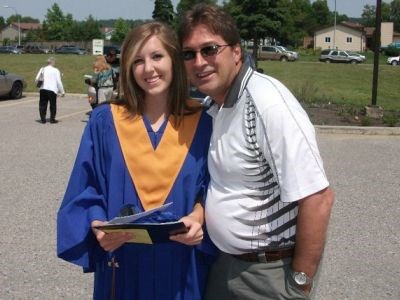After conducting a “thorough investigation,” the Ministry of Labour has decided not to lay any charges under the Occupational Health and Safety Act in the death of Stephen Perry.
Perry, 47, was killed at the 4,215-foot level of Vale's Coleman Mine Jan. 29, 2012. As with the investigation of any workplace death, ministry investigators have up to a year from the time of the incident to complete their report.
“The investigation concluded that the unfortunate death of the worker was caused by being struck by a wedge of rock weighing approximately 14 tonnes, which had dislodged from the mine face,” ministry spokesperson Matt Blajer said.
“The investigation concluded that the conditions which led to the rock falling on the worker were neither visually detectible nor reasonably foreseeable by Vale. We also concluded that the worker had followed the proper procedures.”
According to a statement from the ministry, Perry was loading explosives into a rock face while standing in an Anfo loader “man-basket” when he was killed.
“With the back holes loaded, Mr. Perry repositioned the man-basket to a lower elevation so as to enable loading of the next row of holes,” the statement said.
“Without warning, a large mass of rock collapsed from the face in front and above where Mr. Perry was standing in the man-basket, striking him, and coming to rest on the muck in front of the face.”
The ministry's investigation team, consisting of two inspectors and a ground-control engineer, concluded the mechanism that caused the ground movement “could not have been reasonably anticipated.”
Perry had also “followed procedures established in the workplace,” the statement said.
In the investigators' opinion, the issue which caused the rock to fall was “virtually undetectable” and there “were very likely no observable indicators” to suggest its presence.
Both scraping the rock face and a process called “burping,” where a jumbo drill operator hammers the drill against the rock face to dislodge loose rock, “did not dislodge the material that eventually collapsed,” the statement said.
“This was an extremely unfortunate incident, and the ministry's thoughts remain with the family and friends of Mr. Perry.”
The Steelworkers and Vale completed their own joint investigation into Perry's death in April.
This investigation concluded that Perry had done everything he was supposed to do, but died anyway when the large piece of rock fell on him, Steelworkers Local 6500 president Rick Bertrand told Northern Life earlier this month.
Vale spokesperson Angie Robson said in an email statement that the ministry’s findings are consistent with the results of Vale's joint investigation with the USW, particularly that Perry was following all safety procedures and that it would have been difficult to predict this occurrence in advance.
"As we mark one year since this tragedy, our thoughts and prayers are with Stephen’s family, co-workers and friends. Eliminating all injuries in our workplace continues to be our highest priority," Robson said in the email.
The joint investigation resulted in 15 recommendations, some of which surrounded mine procedures. Others looked at ways mine equipment can be designed to better protect workers from accidents like these, Bertrand said.
Check back to NorthernLife.ca for more on this story as it becomes available.
